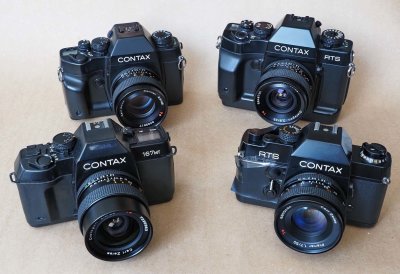
My Contax cameras : RX (back, left), RTS III (back, right), 167 MT (front, left) and RTS (front, right). |
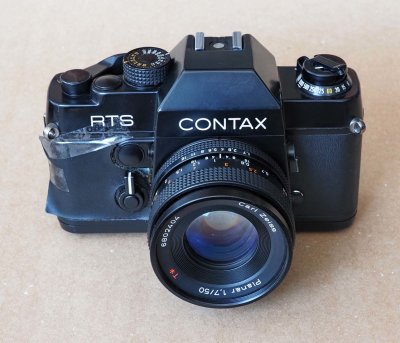
Contax RTS (1974, first model). The front leatherette tends to get apart. |
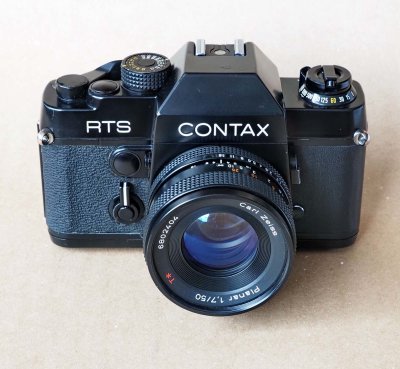
The same RTS, here, with the repaired leatherette. |
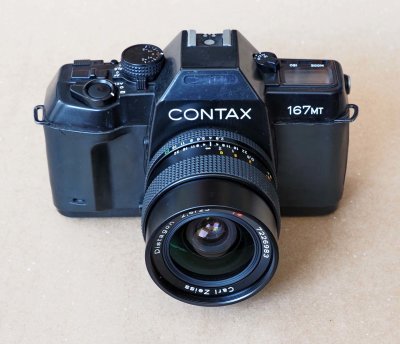
Contax 167 MT; very good camera, fed by 4 AAA batteries. |
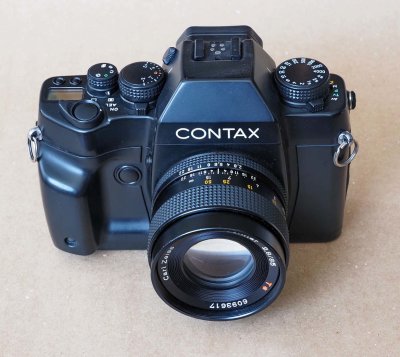
My favorite one: Contax RX (1994). |
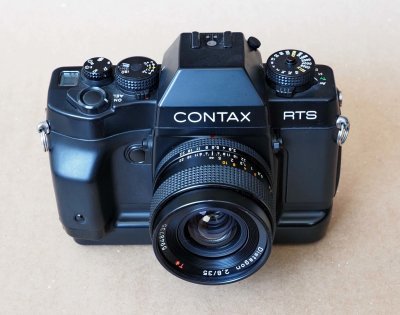
The mighty Contax RTS III (1990); a gift given by Arnulf Kost, 'le berlinois' . |
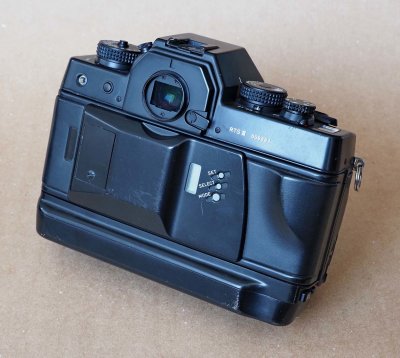
The Contax RTS III has a vacuum system in the back, for film planity. |
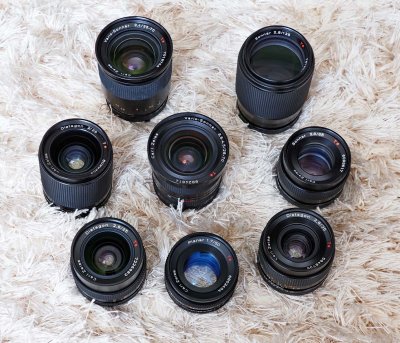
My superb Contax lenses: 25/2.8, 28/2, 35/2.8, 50/1.7, 85/2.8, 135/2.8, 28-70/3.5-4.5 and 35-70/3.4. |
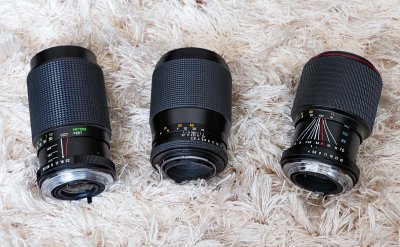
I have two inexpensive lenses: the Vivitar 70-150mm (left) and the Tokina 70-210mm (right); both perform quite well. |

The Canon 6D allows using the Contax lenses through adaptors (each lens needs an adaptor). |
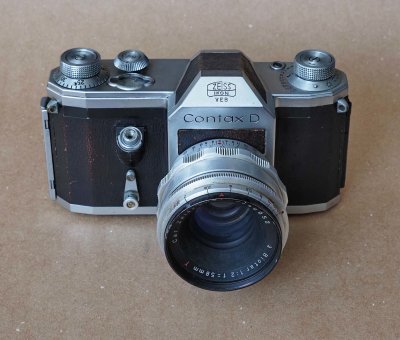
The origin : Contax D, manufactured in Dresden (approximatelly 1949). |
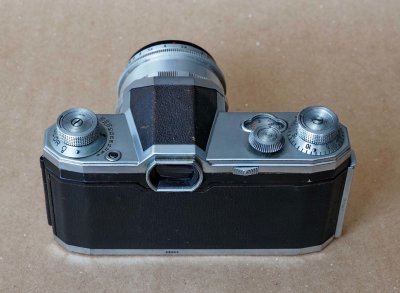
Contax D, back; it has a complex shutter mechanism (in the dial, one chooses the slow and fast speeds). |
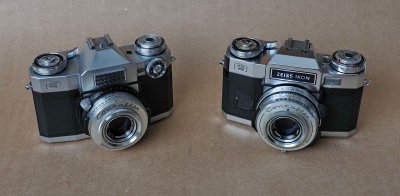
My Contaflex cameras ; the Contaflex Super (1956, left) and the Contaflex Super BC (1965). |
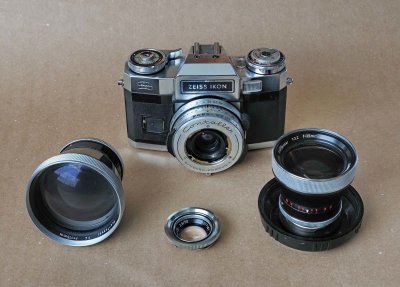
The Contaflex system has a fixed lenses group in the back; the front can be changed for different focal lengths. |
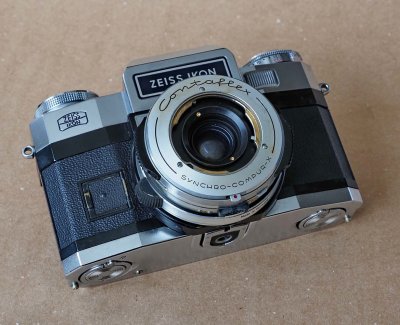
The Contaflex Super BC with the basis lenses group. |
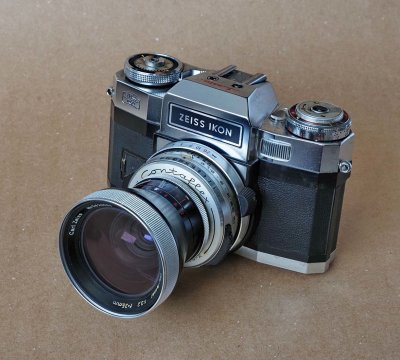
The Contaflex Super BC with the 35mm frontal lens group. |
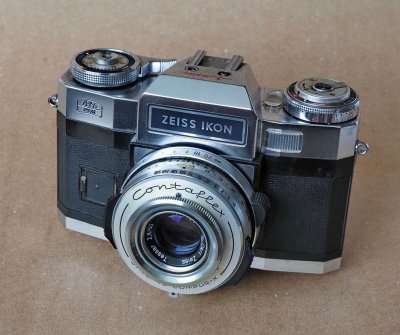
The Contaflex Super BC (1965) with the Tessar 50/2.8 lens. |
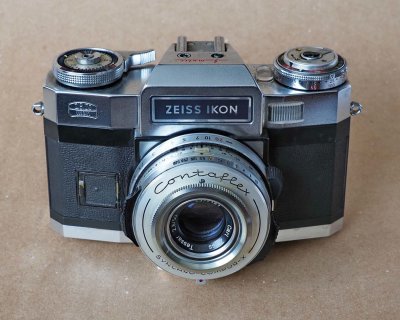
The Contaflex Super BC with the Tessar 50/2.8 lens. |
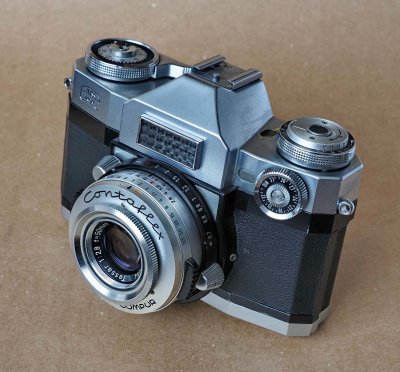
The Contaflex Super with the Tessar 50/2.8 lens. |
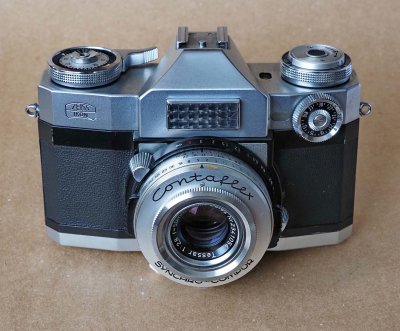
The Contaflex Super with the Tessar 50/2.8 lens. |











